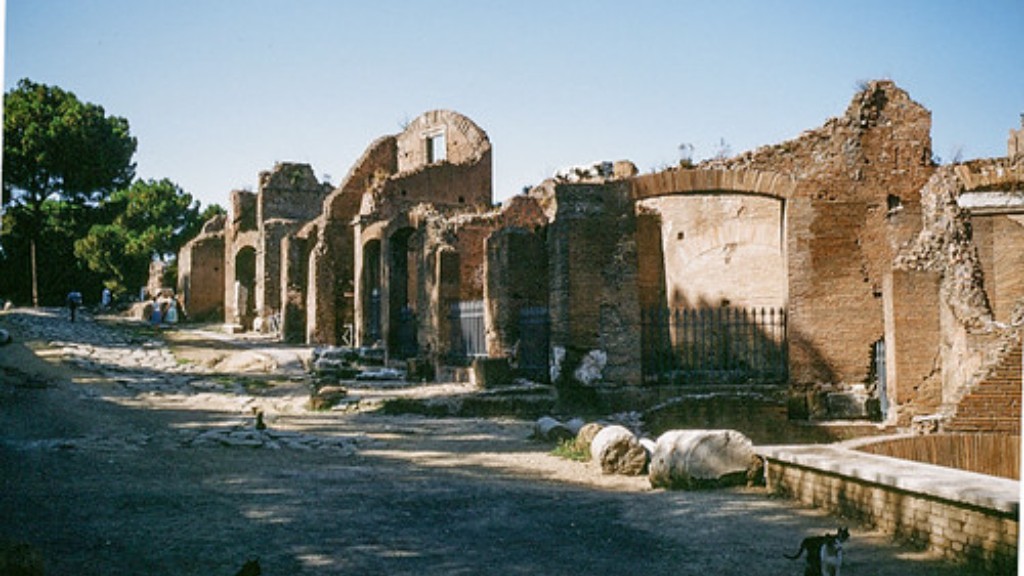In ancient Rome, a gladiator was an armed combatant who fought against another gladiator in a public arena for the entertainment of the Roman people.
Gladiators were people who fought each other, or wild animals, for the entertainment of spectators in ancient Rome.
What was the purpose of gladiators?
A gladiator was an armed combatant who entertained audiences in the Roman Republic and Roman Empire in violent confrontations with other gladiators, wild animals, and condemned criminals.
The gladiators were usually slaves, criminals, or prisoners of war who fought for the entertainment of the crowds. Occasionally, the gladiators were able to fight for their freedom. Criminals who were sentenced to death were sometimes thrown into the arena unarmed to serve their sentence.
What is the history of gladiators in ancient Rome
Gladiators were typically slaves, forced to fight in arenas for the entertainment of crowds. However, a small number of gladiators were free-born citizens who chose to fight in order to earn money and fame. These gladiators underwent months of training in specialized schools before entering combat. These schools were managed by wealthy investors who profited from the success of their fighters.
The majority of gladiators were either prisoners of war or criminals sentenced to death. They were the lowest of the low; violent murderers, thieves and arsonists. Even your most badly behaved football team at their most morally blind would have had no trouble in rejecting this crew.
Were gladiators forced to fight to the death?
Although they didn’t always fight to the death, matches could end in a stalemate if the crowd became bored by a long and drawn out battle. In rare cases, both warriors were allowed to leave the arena with honor if they had put on an exciting show for the crowd.
The gladiators who lost were not so lucky. If the crowd thought their defeat was due to a lack of skill or courage, they would be spared. However, if the crowd felt that the losing gladiator had not fought to the best of his ability, he would be condemned to death. This would be carried out by the referee, who would give the losing gladiator a tap on the shoulder with his sword, signaling him to turn and face his opponent. The victor would then deliver the coup de grace, or fatal blow.
What ended the gladiators?
The gladiatorial games were officially banned by Constantine in 325 CE. Constantine, considered the first “Christian” emperor, banned the games on the vague grounds that they had no place “in a time of civil and domestic peace” (Cod. Theod. 16.5.1). This edict did not stop the games completely, but it did mark the beginning of the end for the bloody spectacle.
In a time when the average lifespan was much shorter, the chances of a professional gladiator being killed in any one bout were actually quite low. In the first century AD, the odds were probably about one in ten. This is a far cry from the three in five chance of not even surviving until age 20.
Were gladiators rich or poor
The games were popular because successful gladiators could become very rich and famous. Many gladiators were slaves or prisoners of war, but some were freedmen who chose to fight for fame and fortune. Some just enjoyed it.
The Roman gladiatorial games were a popular form of entertainment in which trained fighters, typically slaves or conquered people, fought each other or wild animals in front of a large audience. Over time, the games became increasingly brutal, and many gladiators were killed or wounded. As the games gained popularity, many free working-class men signed up to be gladiators, willingly risking their lives for the amusement of the crowds.
Who trained gladiators to fight?
The gladiators of ancient Rome were a fascinating and brutal group of people. These warriors, who fought to the death in the arena for the entertainment of the masses, lived a very different life than most people of their time.
The gladiators slept in small, cramped cells that were just big enough for one or two people. These cells were kept separate from the rooms where their trainers, known as magistri, lived. The magistri were also retired gladiators who specialized in teaching one style of weaponry and fighting.
The life of a gladiator was one of constant training, fighting, and bloodshed. But it was also a life that was full of excitement and adventure. These warriors were true celebrities of their time, and their lives were anything but ordinary.
Spartacus is a famously rebellious gladiator who led a huge uprising of slaves against their cruel masters. He was enslaved and put through the gruelling training regimen of a gladiator, before leading 78 others in a revolt against the tyrant Batiatus. While the rebellion was ultimately crushed, Spartacus’ story has lived on as a symbol of hope and rebellion against oppression.
Did Romans drink gladiators blood
Pliny the Elder and Marsilio Ficino both advocated for the drinking of young blood as a way to regain one’s youth. This practice was extremely popular among the Roman elite, who would often go to great lengths to obtain the blood of young, healthy individuals. While there is no scientific evidence to support the claim that drinking blood can reverse the aging process, the appeal of this gruesome practice is understandable. For many people, the thought of being able to turn back time and recapture their youth is immensely appealing.
The Roman practice of staging gladiatorial games was appallingly brutal, and many gladiators faced the arena with fear and trembling. Those who were assigned to square off against wild animals were especially terrified. On one occasion, 20 gladiators committed group suicide, killing one another one by one, rather than enter the arena. It is no wonder that the Roman crowds were so bloodthirsty when it came to these games.
Were gladiators freed if they won?
It’s interesting to note that even though being a gladiator was extremely dangerous, it was still a popular profession. This was because a gladiator could earn a lot of money if they were successful, and even if they were not, they were usually only committed for a few years before being set free. Of course, the danger of death still loomed over every fight, but for many people, the rewards outweighed the risks.
Female gladiators were extremely rare, but they did exist. In Rome, they were usually ex-slaves or criminals, and their fights were often used as an entertainment for men. However, some female gladiators managed to maintain a certain glamour, especially over some sections of their audience.
Conclusion
Gladiators were foot soldiers in the Roman army. They were recruited from among the prisoners of war and slaves. They were trained to fight in a special arena called the Colosseum.
Gladiators were actually a very small part of Roman society. Most of the people who fought in the arena were slaves or criminals. Gladiators were usually trained by professional trainers who were paid by their owners. Although many people died in the arena, it was not always a death sentence.





